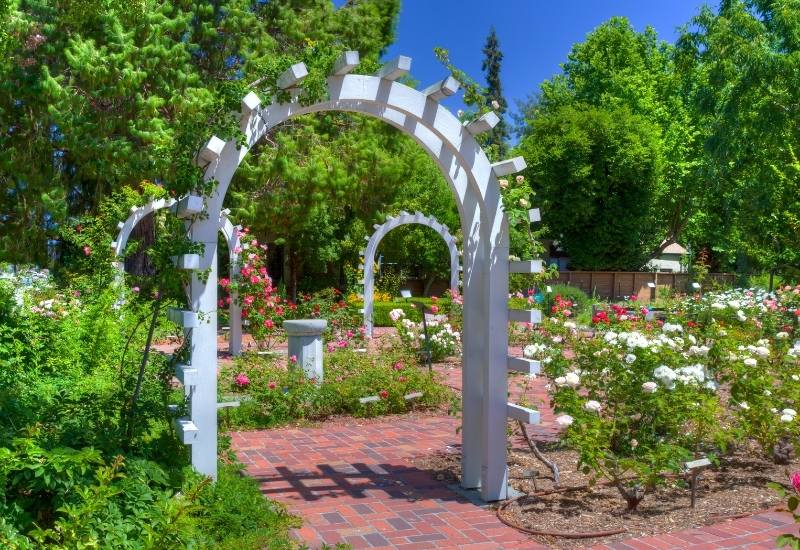
If you’re dreaming of a romantic green and curving shapes with captivating colors and quaint allure, you might not have to look further than and ebullient English garden.
Admired for their verdant lawn, trimmed hedges and borders overflowing with colorful colorful and fragrant, English country gardens is an artistic masterpiece evocation of ideal nature full of gentleness.
Of course, to achieve the natural essence of an English garden, you need to follow the basic design principles and knowledge of plants that grow well in your area but can be incorporated into a landscape.
Many plants are suitable for English gardens, but the need some qualities. They need to look natural, fairly spontaneous, colorful but not exotic. Roses and cottage pinks are perfect, as are some large trees, from conifers to majestic oaks.
The trees you will need depend on the side of your garden, from pines and firs, oaks, elms, ash trees and aspens or plane trees most temperate looking trees will do.
But flowers are more difficult to choose and there are some that are perfect. So this article will select the ones you really cannot do without if you want to create a natural looking English garden.
The Perfect Recipe for the Perfect English Garden
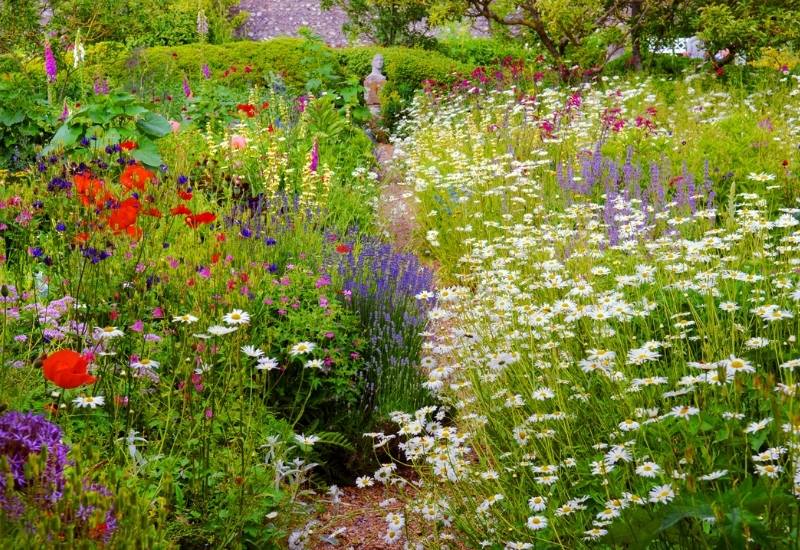
The English garden was developed in the Eighteenth Century in reaction to formal Italianate gardens. In fact, gardens were full of straight lines, even complex geometrical shapes, like mazes or blazons, topiaries and statues.
The paths were straight or geometric and planting was dictated by the geometric shapes of flower beds. Basically, they did not look natural at all!
Also called English landscape garden, it was developed in England to have green spaces that looked like “an improvement on Nature” rather than a “taming of Nature” like before… And they have some key ingredients.
And now that you know how to deign it, it is time to see which plants are best for planting.
14 Perfect Flowers For English Gardens
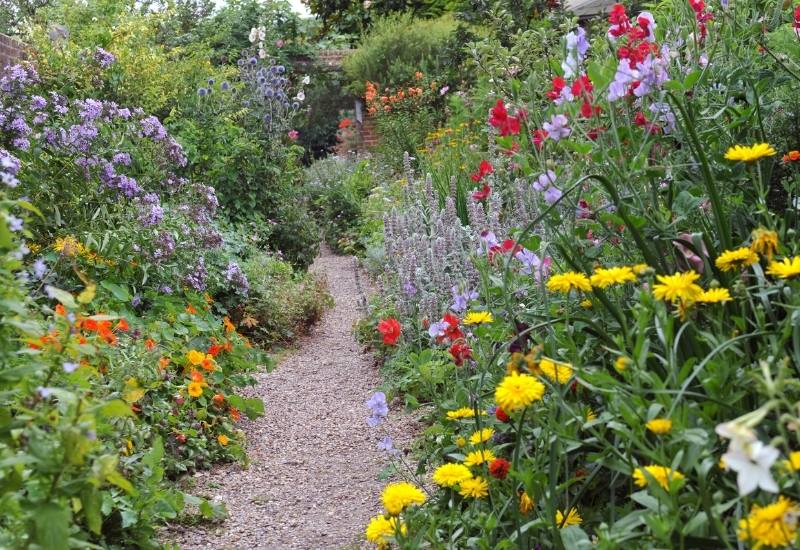
So, once you have chosen some trees that suit your garden here is the top flowering plants for your English garden borders and beds.
1: Daffodils (Narcissus spp.)
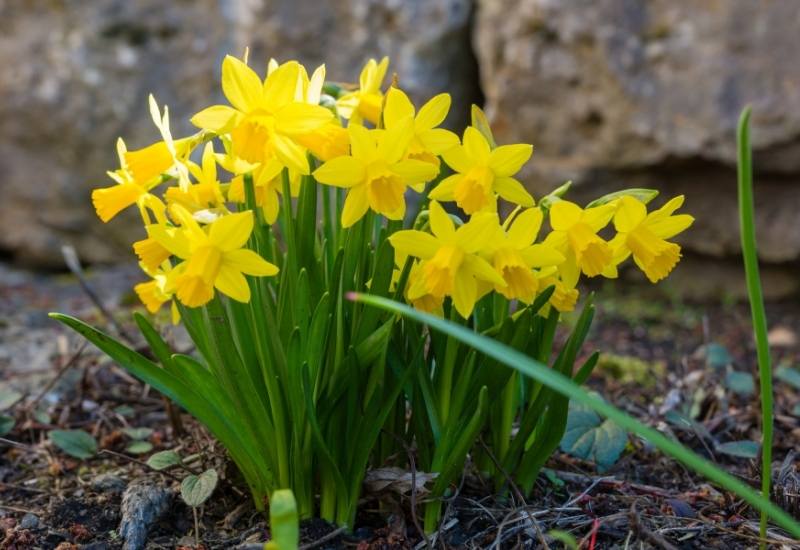
Daffodils are the most “English” of all flowers for your garden. If you have visited England in spring, you will see them literally everywhere, even on the sides of railways!
They are beautiful, they come with a burst of energy and their beautiful scent in “hordes” as the poet Wordsworth describes them and they are just perfect for English gardens.
There are many varieties you can choose from, from the small and natural looking poet’s daffodil to jonquils and large cupped daffodils.
They can grow in natural looking flower beds, even the most showy varieties. But you can also grow them in lawns and under deciduous trees.
In fact. They naturalize so easily that their contribution to the “English look” of your garden is priceless.
2: English Pinks (Dinathus spp.)
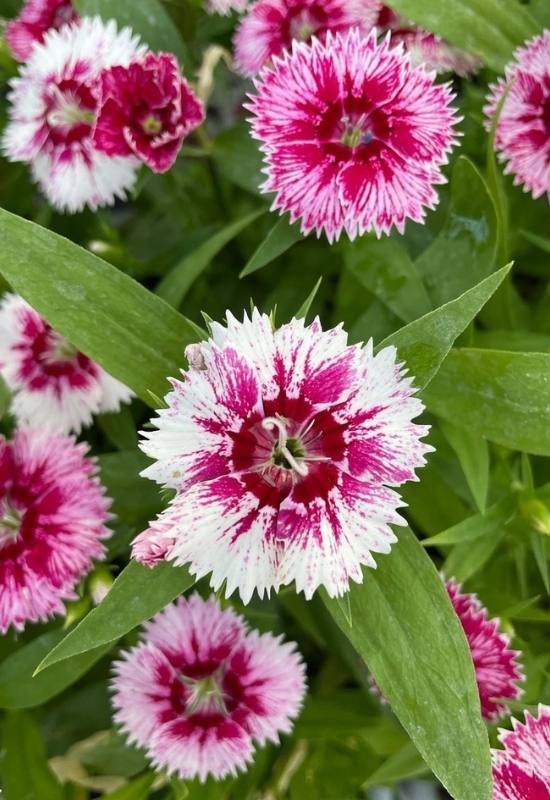
Pinks are small carnations that look, sound and smell perfect for an English garden. They are so generous with their blooms and often very low maintenance that they can solve many problems in flower beds and low borders.
While “pink” is only a gardening name, not a scientific one, it indicates a large number pf species and small varieties that, unlike cut flower ones, form wonderfully colored and perfumed clumps that look very spontaneous enough for the perfect English garden.
The famous Mrs Sinkins Pink is by far my favorite with its candid white flowers, blue foliage and… one of the most intoxicating scents in the whole world. Then again, this pink is a real classic of English gardens.
3: English Rose (Rosa spp.)
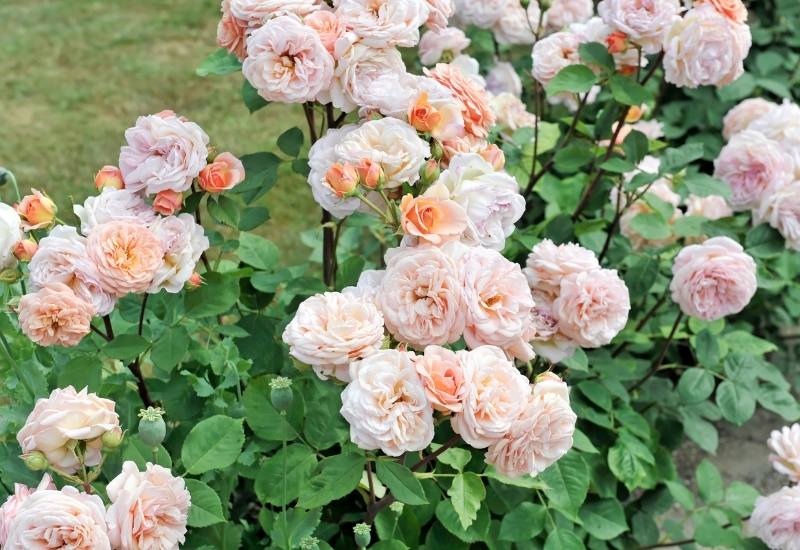
How can you make an English garden without an English rose? You can grow other types of roses too, but hold on… What is an English rose? It’s not a botanical definition.
An English rose is a “typical and traditional rose of England”. They basically look traditional in many ways, and this also makes your garden look like a traditional English garden.
The rest is full of options; you can choose roses of any color, any size and with many traditional shapes (single, cupped, pompon and even quartered), habit (shrub or climbers) and size (from small varieties to massive ones).
One thing though: roses like to be admired in a prominent position and they don’t like taller plants near them.
4: Japanese Anemone (Anemone spp.)
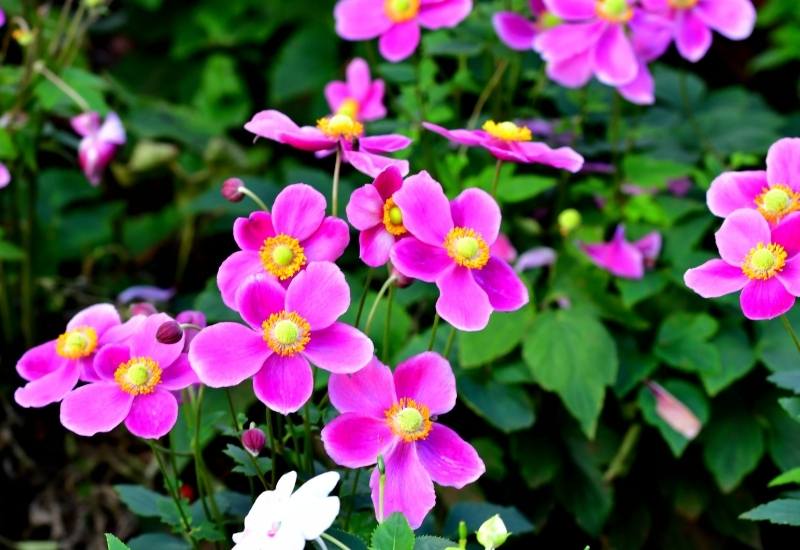
You will love the “woodland look” you can give to your English garden with some Japanese anemones.
They are in fact perfect for natural looking beds and borders, thanks to its rich green and segmented foliage. But then the protagonists are the flowers!
They are white to off white (sometimes going purple or magenta) with large frilled petals and a golden yellow center.
They come on purple stems above the leaves, and they appear quite showy but at the same time not exotic. For this reason, they are perfect for an English garden, especially for late blooms.
5: English Lavender (Lavandula angustifolia)
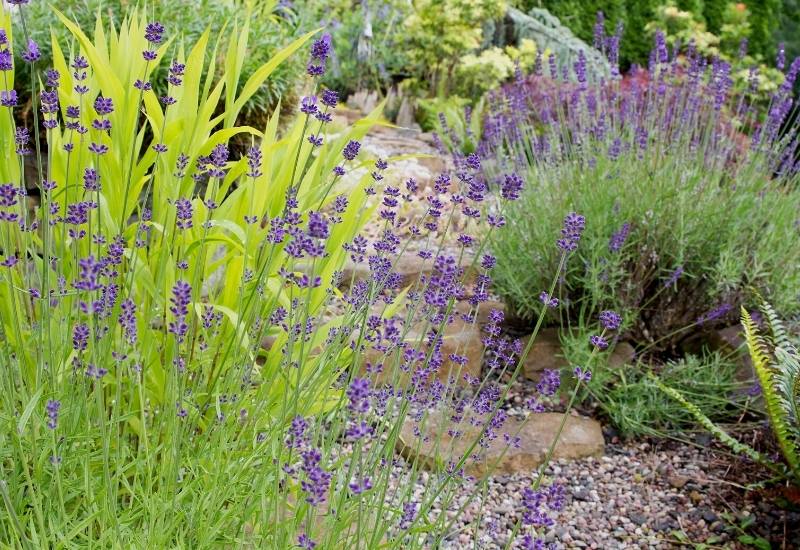
English lavender for an English garden? Yes thanks! If you associate lavender mainly with Provence, there is actually a very prized variety, the English one which is more cold hardy and it also has a better, less soapy and more “aromatic” scent.
It is a favorite for essential oils and perfumes and perfect if you need some informal looking splashes of color to attract butterflies and pollinators.
English lavender is a wonderful plant even for large areas, as the shrubs can stretch for as long as you need them. It is also good to create a sense of perspective using its waves of purple rather than straight lines.
English lavender is your best friend when it comes to designing an English garden. And if you like some color variety, you can find it in mauve, pink and white as well as blue and lavender purple!
6: Hydrangea (Hydrangea spp.)
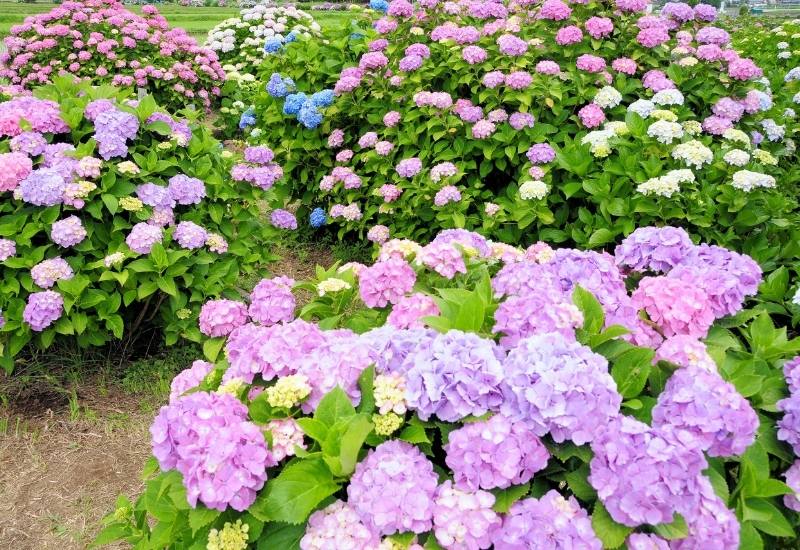
The English garden design is perfect for large spaces, like urban parks, so large plants are perfect, like hydrangea.
This impressive herbaceous flowering shrub is famous for the large inflorescences of the most varied and artistic pastel colors.
This makes it perfect for large gardens, but it also retains that “vintage” look you want to preserve in an English garden.
The blooms can last for months on end, and you can choose from whites, greens, pinks, purples, reds and even violets and blues.
Some varieties have strong colors but most have delicate pastel shades that mix in perfectly well with the dominant green of English gardens.
7: Camellia (Camellia spp.)
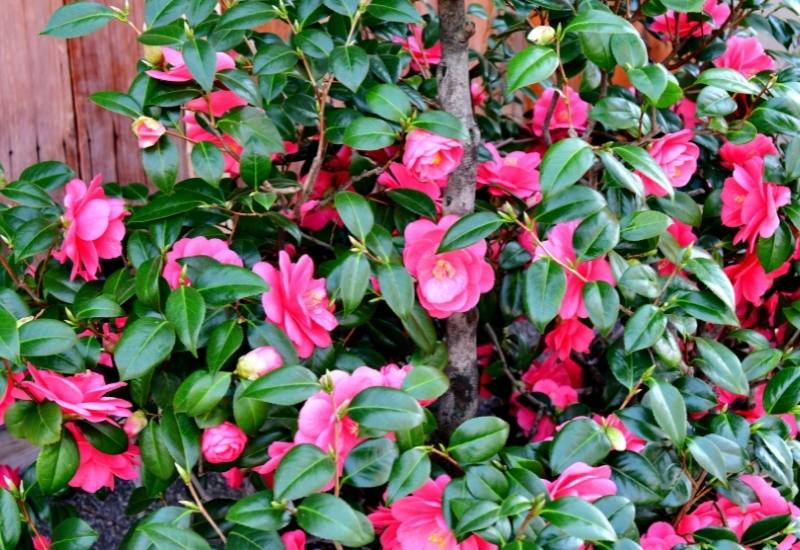
Another classic for English gardens is camellia. This decorative shrub with classical rose shaped blooms is just perfect for the look you want.
And it is mentioned in many English, most notably Rebecca, Daphne du Maurier’s classic novel set, guess where? In a big country house with an English garden styled park!
Camellias are not easy to grow, they like very acidic soil and temperate climate, but they do bless you with beautiful foliage and impressive flowers, that can be white, pink, red and purplish red.
Some are small, but always showy, some are large (up to 6 inches across, which is 15 cm!) And all have that “traditional English” look on them…
8: Rhododendron (Rhododendron spp.)
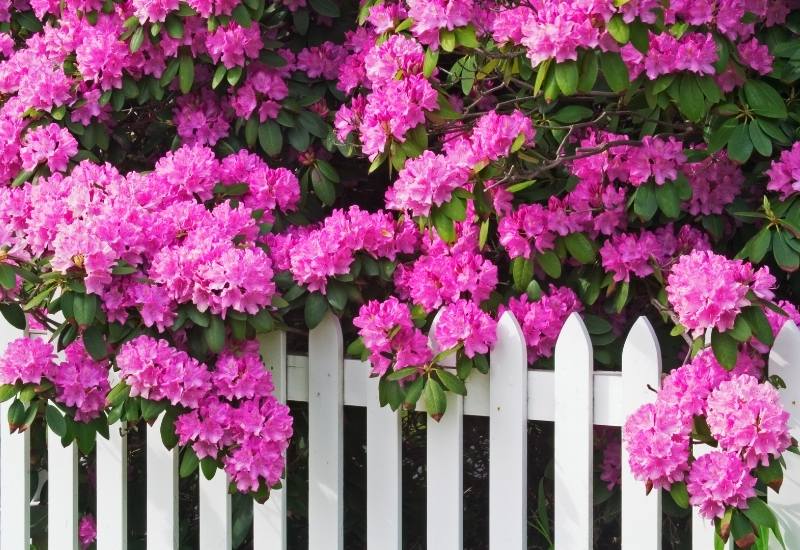
One of the largest collections of rhododendrons is in the Queen’s own personal park, in Windsor, by her very English castle…
These amazing shrubs were so important for English gardens that Kew Gardens, the Royal Botanic Gardens of London sent expeditions to the Himalayas to find new species, a life risking activity!
These large shrubs fill with the most amazing sea of flowers when in bloom, and the colors are lie a rainbow: from white to purple via yellow, red, pink and orange, the choice is really huge.
They too are excellent for large spaces as well as in the partial shade of tall trees to make this “woodland area” come alive with fireworks!
9: Primrose (Primula spp.)
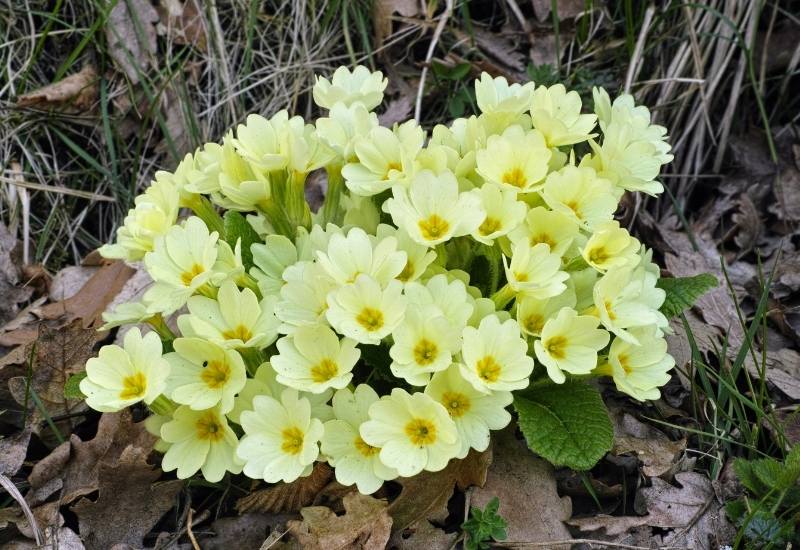
Another classic of English springtime is primrose, which makes it a classic of English gardens too. You will want this small but brightly colored beauty in small beds, even in the dappled shades of trees, where you can really create an amazing effects thanks to its many early flowers and many colors.
In fact, if the most common color is yellow, there are varieties of literally any color, from white to blue and they are often very strong, bright and eye catching colors.
Although it is small, it is ideal for large gardens too. This is because it naturalizes very easily, it is cold hardy and it can grow into large swathes of flowering perennial plants.
10: Marigold (Tagetes spp.)
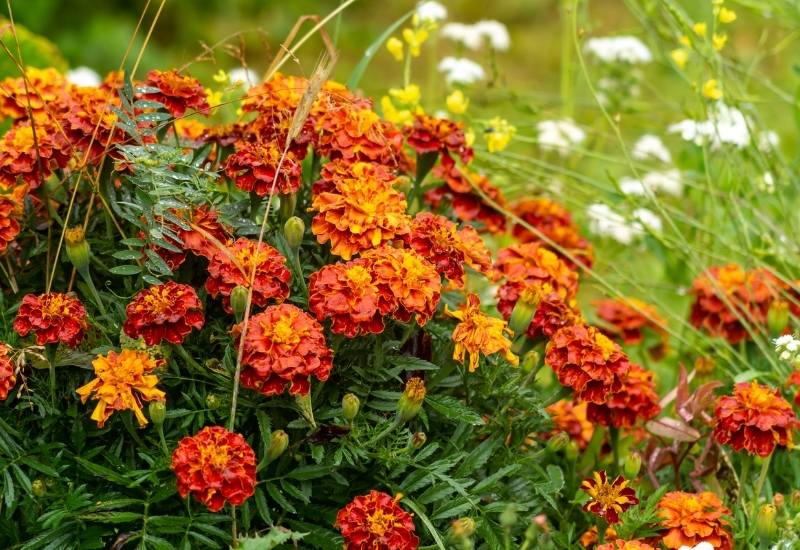
Marigold flowers adapt very well to English gardens too. They are perfect thanks to their strong warm colors and long blooms.
They are also good to keep pests away from your garden. This is often necessary with foliage rich and natural looking gardens.
What is more you can use them to create curving lines of perspective and to draw the eye, thanks to their thick blooms of extremely bright and eye catching yellows and oranges.
The foliage, then, gives you a very decorative pattern that looks like filigree. Finally, you can use the to “lift” beds and borders with the warms and intensity of their colors.
11: Peony (Paeonia spp.)
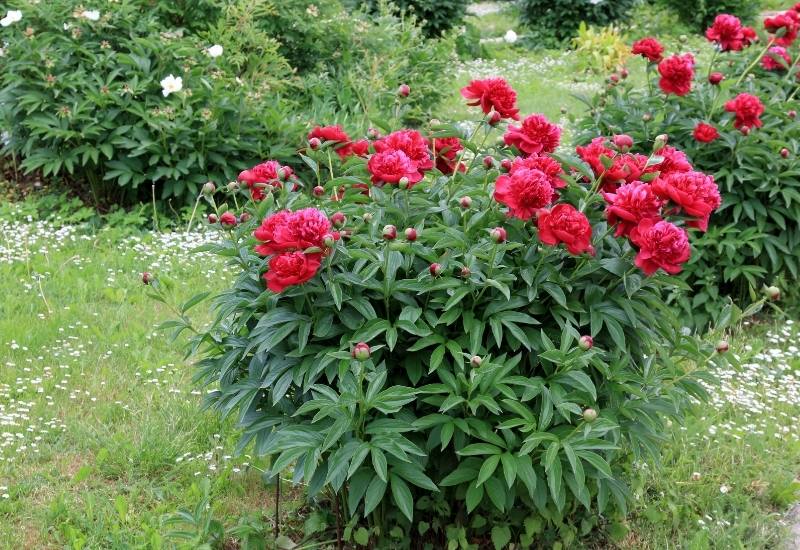
Peony is a showy flowering herbaceous plant that is excellent for English gardens. In fact, its foliage is so thick and rich in texture that it is perfect to fill borders and large, informal beds. And borders are key to English gardens, because they replace formal paths and walls.
There are hundreds of different varieties and cultivars to choose from, and the flowers are just stunning.
Often so filled with petals that they look like pompons, they can be of any shade between white and deep purple. But also single peonies are striking!
They look best when planted at the back of flower beds and inside borders, rather than at the front.
This is because their habit and blooms look much better when they are “mixed in” with other plants, even supported by lower ones. This way, you can achieve a perfect naturalistic look but with very bright and eye catching flowers.
12: Violas, Pansies and Violets (Viola spp.)
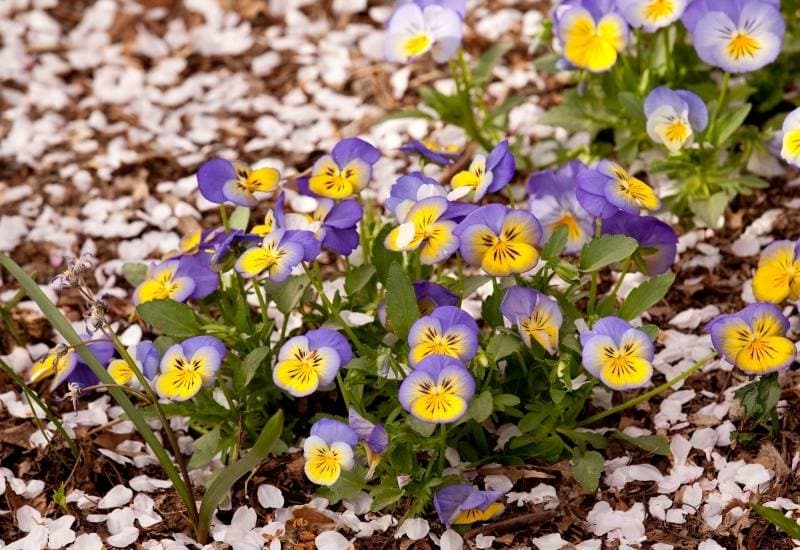
Have you ever seen an English garden’s flowerbed without violas or violets? These beautiful and so colorful little (or even large) flowers are so common especially in more “front garden” style beds.
You will find them in the more formal and low beds of English gardens, often just in front of the house (or manor if it is a big garden)…
The wild looking varieties (small pansies) are instead excellent to carpet the dapple shaded ground under trees, where they can be used as groundcover.
They look so at ease in natural looking, forest and mountain inspired landscapes, that you can hardly have a proper English garden without them.
13: Columbine (Aquilegia vulgaris)
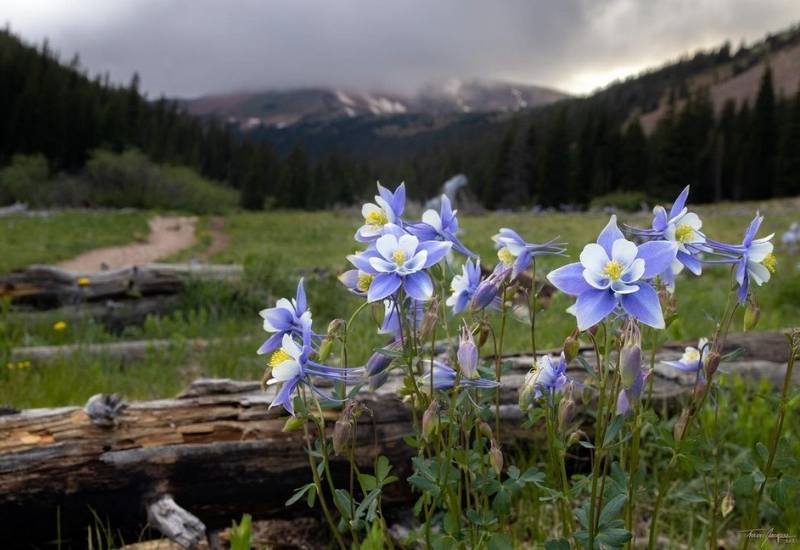
Columbine is a wonderful herbaceous plant with amazing flowers that are perfect for the English garden look.
The leaves are rich in texture and they are perfect for the natural look of English garden flower beds.
But they are also great for borders, because they fill in the space with their foliage and they fit in very well between other plants.
And the flowers! They are original in shape, and the colors… you can get columbines in virtually all colors, including very rare ones, like green and black (actually very deep dark purple) or brown. Perfect for complex color combinations.
14: Clematis (Clematis spp.)
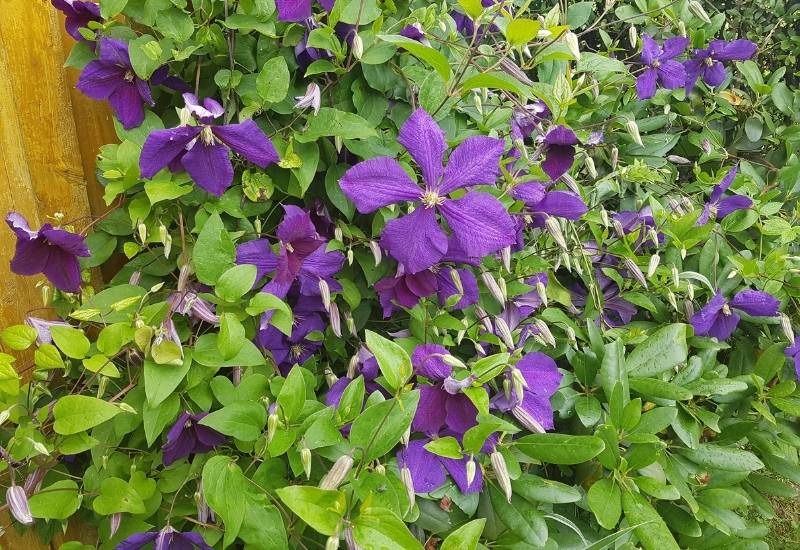
But what can you grow ion pergolas and fences in English gardens? Clematis is a perfect choice. In fact it has very showy flowers, that look exotic enough but without appearing out of place in a temperate garden.
These lovely climbers can have large flowers indeed, up to 8 inches across (20 cm) and they are available in a wide range of colors, from white through punk, magenta, rose, lavender and purple and even the blue range is good. They are perfect to make it look as if that pergola was naturally colonized by this beautiful plant…
Let the Flowers Speak for Themselves in English Gardens
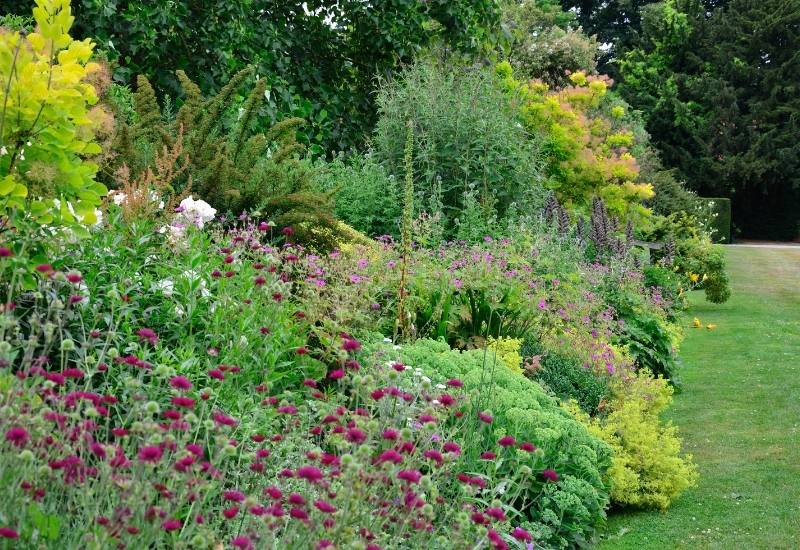
Roses and pansies, pinks and daffodils are all common in English gardens. If the general look of these gardens comes from big trees and the planting design, no English garden is actually complete without some of these “traditional inhabitants”.
Just remember to plant them so that they look like they grew up spontaneously, in clumps, and let them speak to your visitors like “free citizens”’of your garden.

Written By
Adriano Bulla
After many years as an academic in London, Adriano Bulla became a writer, publishing books like A History of Gardening, Organic Gardening and Elements of Garden Design; he then decided to become a gardener, following his childhood dream, and has been following his dream writing and gardening professionally in Southern Europe, where he has specialized in new and innovative organic gardening fields and techniques, like permaculture, regenerative agriculture, food forests and hydroponics.
